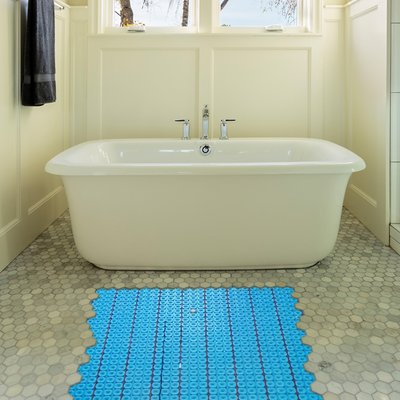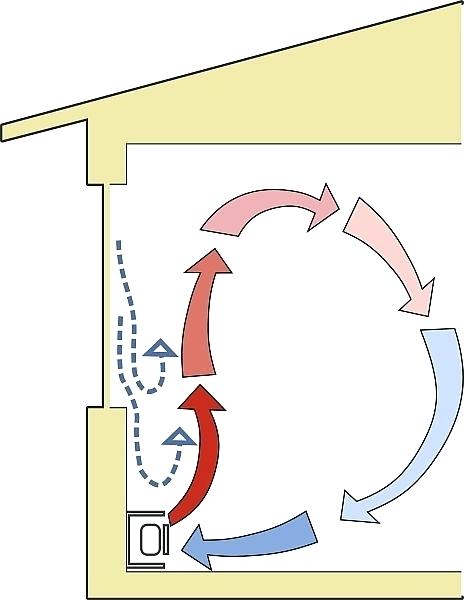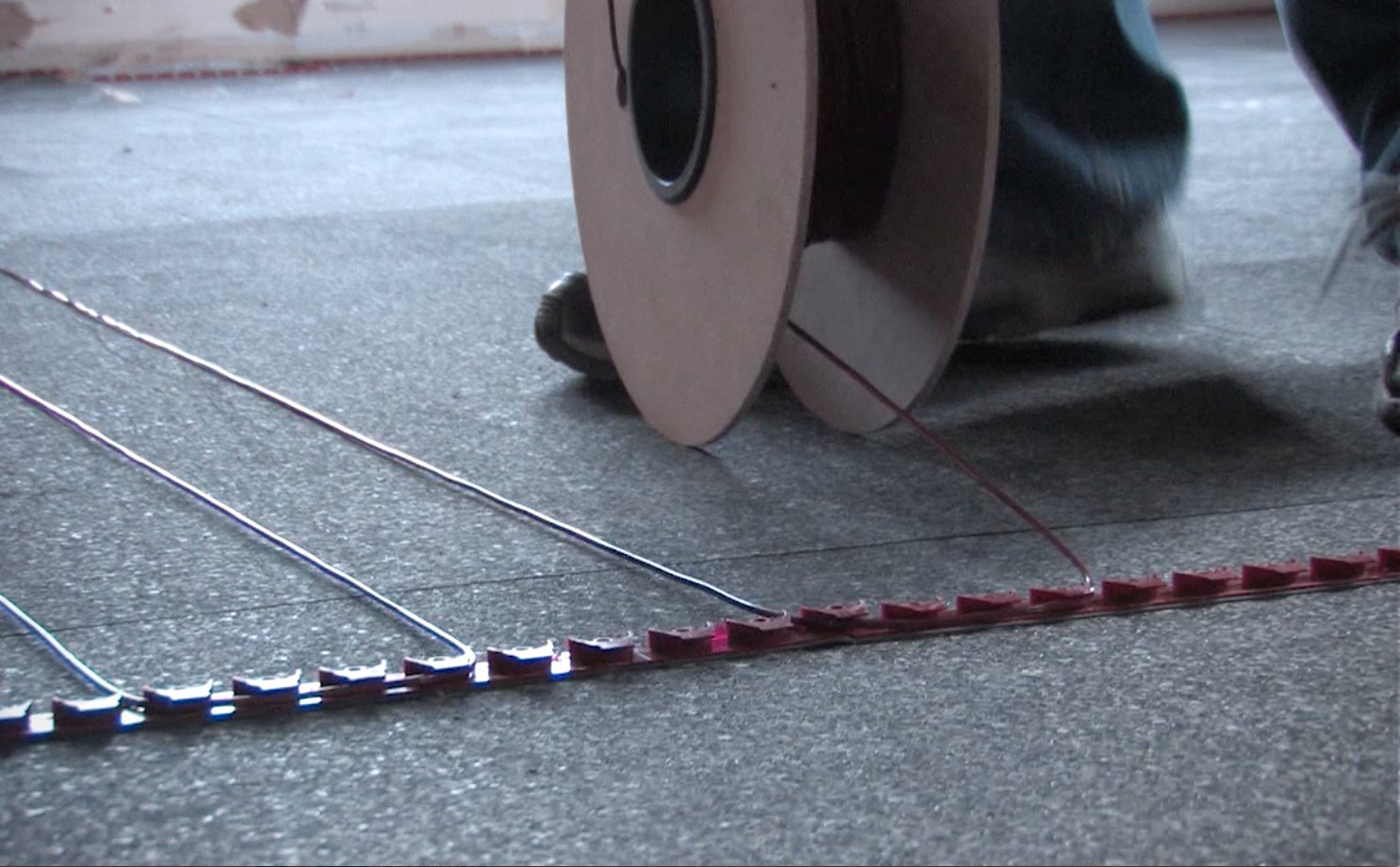It’s easy to determine if your home needs a supplementary heat source. If you have one or more rooms that are colder than the rest of the house, you’re in need of extra heat. However, what isn’t as easy is deciding how to add that heat.
If you already have an HVAC system in place, electric floor heating and baseboard heating are two of the best options. Nevertheless, each has its advantages and disadvantages. To help you decide, we’ve compiled a list of the pros and cons of each.

Electric Floor Heating
Electric floor heating systems consist of heated cable that runs in a serpentine pattern underneath the floor. This cable warms the floor above, which in turn warms the people and objects in the room.
Pros:
Arguably its No. 1 advantage is its energy efficiency. Electric floor heating systems are more efficient than baseboard heaters and even forced-air heating systems. In fact, they are nearly 100 percent energy efficient. That’s because, as long as the systems are correctly installed, there’s nowhere for the heat to escape. It’s all forced upward through the floor, as opposed to forced-air systems, which are prone to leakage through the ductwork.
The next best advantage is its even heat distribution. Baseboard heaters and forced-air systems are placed in select areas of the room, which leads to uneven heat distribution. Floor heating systems are installed underneath the flooring throughout the room, leading to even heat distribution. Plus, because they are located under the floor — and because heat rises — the heat in the room will be evenly distributed from floor to ceiling. Other heating systems typically result in greater warmth toward the ceiling, leaving your feet cold.
Cons:
If you don’t wish to replace your flooring, in-floor heating may not be your best option. As its name suggests, a floor heating system must be installed under the floor. That means you have to tear out your existing flooring and install something new. If you’re due for a flooring update, in-floor heating may be just the push you need. But if you aren’t, you may want to consider another option.
Secondly, the cost to operate a floor-heating system may be high depending on where you live. If you live in an area with high electricity rates, it may be more practical to go with a supplemental heating option that uses gas or water. To find out what the operating cost for an electric floor heating system would be in your area, click here.

Baseboard Heating
Electric baseboard heaters are typically installed on exterior walls underneath a window to supply extra heat. They consume the cool air in the room, warm it, and send it back out through aluminum fins.
Pros:
If you live in an area with particularly harsh winters, baseboard heaters may be your ideal option. They were designed to provide heat near windows to keep the cold away. When temperatures drop, a baseboard heater will prevent moisture from forming on windows and causing problems.
Baseboard heaters are also relatively inexpensive to install and easy to repair. Instead of having to remove part of the floor to fix a short in an electric floor heating system, baseboard heaters can simply be replaced if an error occurs.
Cons:
Because baseboard heaters are positioned near windows, rooms are not evenly heated. Plus, they’re not very energy efficient, because those windows may offer an escape route for the heat.
Another significant disadvantage is the fact that baseboard heaters take up valuable space in a room. The units require at least 6 inches of space around them, which means you cannot place furniture, draperies or other objects too close to them. This can really limit the way a homeowner is able to use a room, which is a substantial downside.
What’s in Common?

Despite their differences, electric floor heating systems and baseboard heaters have a few benefits in common. Both allow zoned heating, which means the homeowner can control the heat in each room individually. Both operate very quietly, as opposed to forced-air systems. And, neither stirs up allergens like dust because they aren’t blowing warmed air through the room.
In the end, it all comes down to two questions: Do you mind replacing your floor? And, how important is an evenly heated room to you? If replacing your floor is a deal breaker, then baseboard heating is your answer. However, if it’s important to have an efficient, evenly heated room, then floor heating is your answer.
To get a free Instant Quote for an electric floor heating system please use our Radiant Heat Cost Calculator.





Forced air is the hands-down winner. Neither floor or baseboard radiant heat can have air conditioning added. Neither can add an automatic minimal maintenance humidifier like forces air can. Neither can add an electronic air cleaner. Neither can add a UV light to kill bacteria/viruses. Forced air can do all these. And new forced air systems use multi-fan speeds and are very quiet. Unlike my hot water baseboard heat that goes tick-tick-tick when warming up or cooling down. Go with forced air if you can.
Thanks for your detailed response! While we might disagree on some points, it's clear you've put some great reasoning and careful thought into your comment. We agree that forced air heating certainly has some benefits and might be a good fit for some homeowners but it sounds like you'll need to make some serious additions to your system to mimic the benefits inherent in radiant heating. Radiant heating doesn't dry out the air like forced air so a maintenance humidifier is likely unnecessary. Similarly, since radiant heating doesn't disturb the air an electronic air cleaner is probably not needed either. As far as the volume of the system is concerned, you're right that hydronic (water-based) systems do have some noises involved but electric systems essentially operate silently. Hope that helps and thanks again for continuing the discussion!